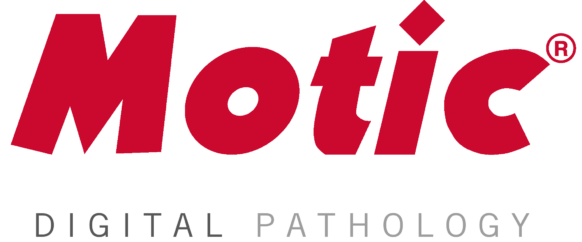Addicted to Digital Pathology
A funny thing happened to me on my way to the office a few months back.
After many years in the thought and planning process our anatomic pathology laboratory with one of our hospital partners is being renovated.
As part of the renovation, temporary workspaces and relocation of equipment and personnel is needed. This meant temporarily moving our slide scanner from its current home to a temporary location before moving it to its final resting spot when the renovation is complete.
These moves are always a gamble. Sometimes you can plug them back in and they work, the LAN drop is active and you can scan images to the networked drive.
This was not one of those instances. A controller and the card in the computer had to be serviced and then calibrate the device to make the device operational. The move occurred the week before Thanksgiving. IT resources were scarce with the short week. Consult cases sent in, cases sent out, education, archival and conference cases were backing up.
E-mails were flying from a number of folks asking when the problem(s) would be corrected to support their conferences, work, research, etc…
The alternative methods to have conferences, all patient care/management related, some with CME offered, such as multi-head microscope, video camera on a cart, static images in a PowerPoint slide deck were rejected repeatedly by both pathologists and clinicians.
The pathologists presenting the conference and clinicians attending those to make treatment decisions with pathology review have become hooked on digital pathology.
ad·dict·ed, ad·dict·ing, ad·dicts
1. To cause to become physiologically or psychologically dependent on a habit-forming substance.
2. To occupy (oneself) with or involve (oneself) in something habitually or compulsively.
 For educational, patient care, management when relying upon pathology review for quality assurance, quality control and peer review, my colleagues have become addicted to digital pathology.
For educational, patient care, management when relying upon pathology review for quality assurance, quality control and peer review, my colleagues have become addicted to digital pathology.
How quickly folks forget. Before a couple of years ago without shared resources between our group, hospital system and scanner vendor, there would be performance issues, scanning issues, network issues, local PC connectivity issues in the conference room, no video projector, room locked, room to hot or too cold. Someone would forget to send the list on Wednesday for the Friday conference or cancel the conference without sharing the news.
The initial investments in digital pathology technology and subsequent support needs, training, personnel resources and storage needs continue to bring forward strong opinions in our group if these are needs, wants, desires, necessities or if they have any tangible or intangible ROI for the group. Despite the defined needs, measurable ROI with our clinicians, patient-centric, mission-critical needs, recurring support and personnel needs are always a matter of ongoing debate between those that are “pro” digital pathology technology and those that are on the “con” side.
The scanner has had zero downtime in over two years. It is expected to be reliable and reproducible to support many conferences and mission critical patient care activities. Connectivity to the image server has been without fail for as long.
Sometimes we still don’t get the lists on time, can’t find the guy or gal with the key and the thermostat apparently is not a functioning device but we have whole slide images ready to go to feed the habit.
 It was of course not always this way. Some folks still prefer capturing images from a digital camera and making a slide deck. They have good reasons for doing so and works for the conferences they support and those clinicians have not become addicted to digital pathology (yet). For others that tried it with whole slide imaging, they and their clinican colleagues are hooked. No going back to Powerpoints, video or, if you can believe it, sitting in a dark room reading reports at a “tumor board” or “teaching conference”.
It was of course not always this way. Some folks still prefer capturing images from a digital camera and making a slide deck. They have good reasons for doing so and works for the conferences they support and those clinicians have not become addicted to digital pathology (yet). For others that tried it with whole slide imaging, they and their clinican colleagues are hooked. No going back to Powerpoints, video or, if you can believe it, sitting in a dark room reading reports at a “tumor board” or “teaching conference”.
What is it about whole slide images that now make them a required component of these management conferences and learning sessions for staff and housestaff?
The ability to look at many cases in the allotted time beyond video projection or slideshow of static images? No way. The minimization of prep time required by pathology beyond picking a slide or two to show at the conference versus taking some snapshots, embedding them into a slideshow or marking the necessary slides with glow in the dark ink so that you can find them in a dark conference room half blind from looking at a bright halogen bulb through the microscope? No way.
Clinicians don’t care how long it takes you to find the slides, take pictures or mark slides for their conference. That is our job. We should come up with a better way of saving cases for conference and taking pictures.
Is it about looking at the entire slide, as a representative image of the case with the patient’s name on the slide available, if so desired, during the conference and look at multiple fields and powers in real-time? I have long thought this was the case and convinced of it now.
Clinicians need proof that what you are showing them, first and foremost belongs to theirpatient and the disease he/she has is on the slide, in multiple fields, present at low power and confirmed at higher power. Perhaps they speak with patients and their families after such conferences and tell them they looked at their slides with their pathologists and agree with what they saw. Perhaps they mention looking at an H&E stain and some special stains or immunohistochemical stains that support a diagnosis and refute others that were in the differential diagnosis pre-biopsy or pre-operatively.
The saying goes “A picture is worth a thousand words” and perhaps multiple pictures from the same patient is worth many more to the caregivers and anything less now than whole slide images devalues the slide, the conference and the information it needs to convey.
































